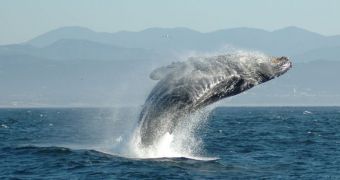The Patagonian Coast, in Argentina, features a location known as the Peninsula Valdes, which has been somewhat of a gruesome scene for the past five years. Since 2005, nearly 310 whales have been found dead here for no apparent reason. The worst part is that only a handful of the animals were adults, with nearly 90 percent being calves no older than three months. Even more devastating is that the small whales that died here over the years represent about a third of the total sightings of right whale calves in the world, LiveScience reports.
According to researchers specializing in these issues, the Peninsula Valdes events represent the greatest whale die-off on record anywhere in the world. “This is the single largest die-off event in terms of numbers and in relation to population size and geographic range,” Wildlife Conservation Society (WCS) medical veterinarian Marcela Uhart explains. She is also the WCS Global Health Program associate director for Latin America. No reasons for why the whales died were immediately apparent, and this prompted action from international authorities.
The International Whaling Commission (IWC) called an urgent meeting this month to discuss the issues. The gathering will take place in Puerto Madryn, Argentina, and the IWC scientific community will discuss a plan of action to handle this problem, and determine its causes. One of the few leads researchers have to go on are the thin layers of blubber that were found on some of the dead whales. This is highly unusual. On the other hand, right whale calves are known for having difficulties surviving their first year, but the instance in Argentina is unique.
Historically, some of the factors affecting this type of whales have included disturbances from whale-watching boats, attacks from killer whales, vessel strikes or fishing-gear entanglements. “These last two mortality factors are the main causes contributing to the near extinction of northern right whales [near the] Eastern US,” Uhart adds. “Even though the population at Valdes seems to be suffering unusually high calf mortalities, all other southern right whales seem to be doing well,” the expert says. Possible factors that remain to be considered include toxins in their environments due to algae, lack of food, water contamination, pollution, increased levels of noise in the oceans, and other similar events.

 14 DAY TRIAL //
14 DAY TRIAL //